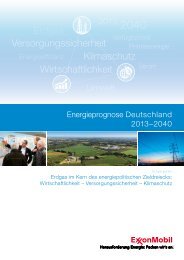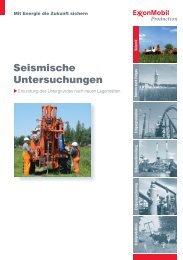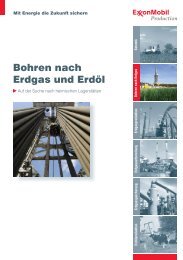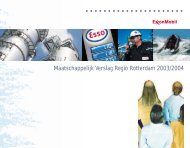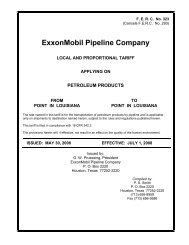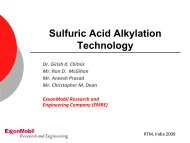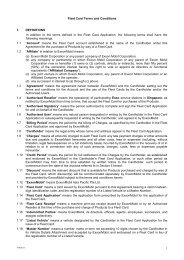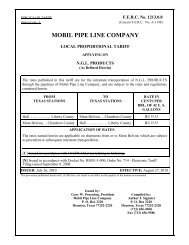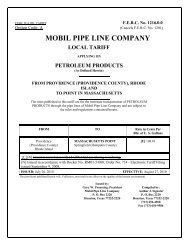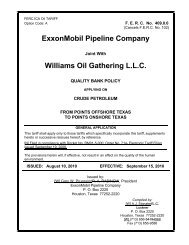The Lamp - ExxonMobil
The Lamp - ExxonMobil
The Lamp - ExxonMobil
You also want an ePaper? Increase the reach of your titles
YUMPU automatically turns print PDFs into web optimized ePapers that Google loves.
5<br />
Papua New Guinea<br />
LNG project plans move ahead<br />
A proposed project in the South-<br />
ern Highlands and Western<br />
Provinces of PNG could bring<br />
new supplies of liquefied natural<br />
gas (LNG) to world markets by<br />
the next decade.<br />
<strong>The</strong> initial development envisions<br />
the construction of the<br />
960-million-cubic-feet-a-day<br />
gas-conditioning plant and a gas<br />
pipeline to a liquefaction plant to<br />
be built on the Gulf of Papua near<br />
Port Moresby, the nation’s capital.<br />
<strong>The</strong> LNG plant would produce 6<br />
million metric tons a year of LNG<br />
for shipment to international markets.<br />
<strong>The</strong> gas is to be transported<br />
to the plant by a 440-mile pipeline<br />
(250 miles subsea). Liquids<br />
recovered at the existing Hides<br />
gas plant would be combined<br />
with crude oil from the oil operations<br />
and transported through<br />
the existing oil export system to<br />
the Kumul platform, an offshore<br />
tanker loading facility.<br />
Earlier this year <strong>ExxonMobil</strong><br />
and the project joint venturers<br />
signed commercial agreements<br />
naming <strong>ExxonMobil</strong> affiliate Esso<br />
Highlands as operator and sole<br />
marketing representative for the<br />
joint venture. <strong>The</strong>y also signed<br />
a gas agreement with the PNG<br />
State establishing the legal and<br />
fiscal framework for this significant<br />
development.<br />
“<strong>ExxonMobil</strong> is pleased to have<br />
Story by Bob Davis<br />
Important new energy supplies could be produced from the remote<br />
highlands of Papua New Guinea (PNG) under a plan currently being<br />
developed by <strong>ExxonMobil</strong> and its joint-venture participants.<br />
completed these key agreements<br />
and to move this project to its<br />
next stage,” says Peter Graham,<br />
venture manager, <strong>ExxonMobil</strong><br />
Development Company.<br />
Engineering and design<br />
That next stage involves what<br />
are called front-end engineering<br />
and design (FEED) activities. This<br />
includes engineering and design,<br />
execution planning, project<br />
financing, gas marketing, and all<br />
of the regulatory and permitting<br />
work, including community and<br />
landowner consultation.<br />
“We are expecting a final<br />
funding decision late next year,”<br />
says Graham. “We look forward<br />
to working with the PNG government<br />
and our joint-venture<br />
participants to maximize the<br />
value of the resource and provide<br />
long-term, sustainable benefits<br />
to the community.”<br />
Those benefits are expected<br />
to be substantial. An analysis<br />
by economists at ACIL Tasman<br />
suggested the project could<br />
transform the economy of PNG,<br />
potentially doubling its gross<br />
national product, boosting<br />
government revenue, providing<br />
royalty payments to landowners<br />
and creating jobs during both<br />
the construction and operational<br />
phases. With projected total<br />
direct cash flows of more than<br />
Photo by Isaac Tauno<br />
Sam Koyama, <strong>ExxonMobil</strong>’s land and<br />
community affairs manager, addresses<br />
a community meeting at Boera village<br />
near the proposed site of the gas<br />
liquefaction plant. Community and<br />
landowner consultation is an important<br />
part of project activities.




